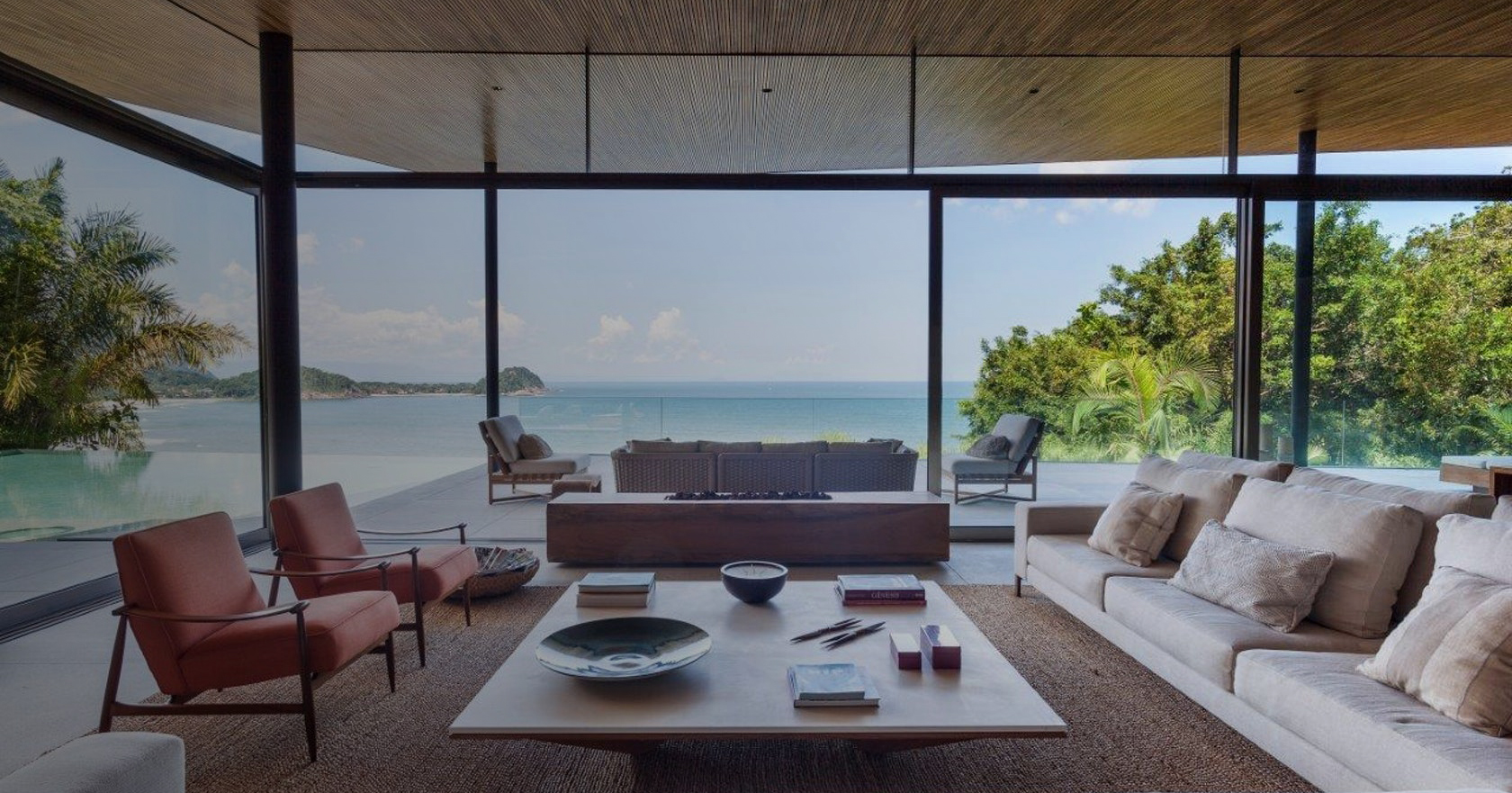Architects: Showcase your next project through Architizer and sign up for our inspirational newsletter.
Originating as a tool for civil engineering, the gabion wall dates back to the late 1800s. It slowly made its transition to architecture because of its superior strength and permeability. The gabion wall consists of a metal mesh cage filled with loose material, usually stones, sand or soil. The wall is crack resistant and contours to the grade of the site. The material used to fill the cages determines how porous the wall is, a feature often used to create a natural cooling effect.
Architects prize the gabion wall, traditionally used as a landscape material, for its bold, textured look. Unlike the orderly rock wall, gabion walls provide a feeling of accidentality to a building, allowing the eye to explore the irregular shapes and patterns. They are often used as exterior walls to provide a rugged, outdoor aesthetic, but are also exposed in the interior, merging the two both materially and environmentally.
The following collection of projects showcase this rugged construction technique at its contemporary best. Take a leap and discover life beyond brick, concrete or plastered walls:

© Oskar Da Riz
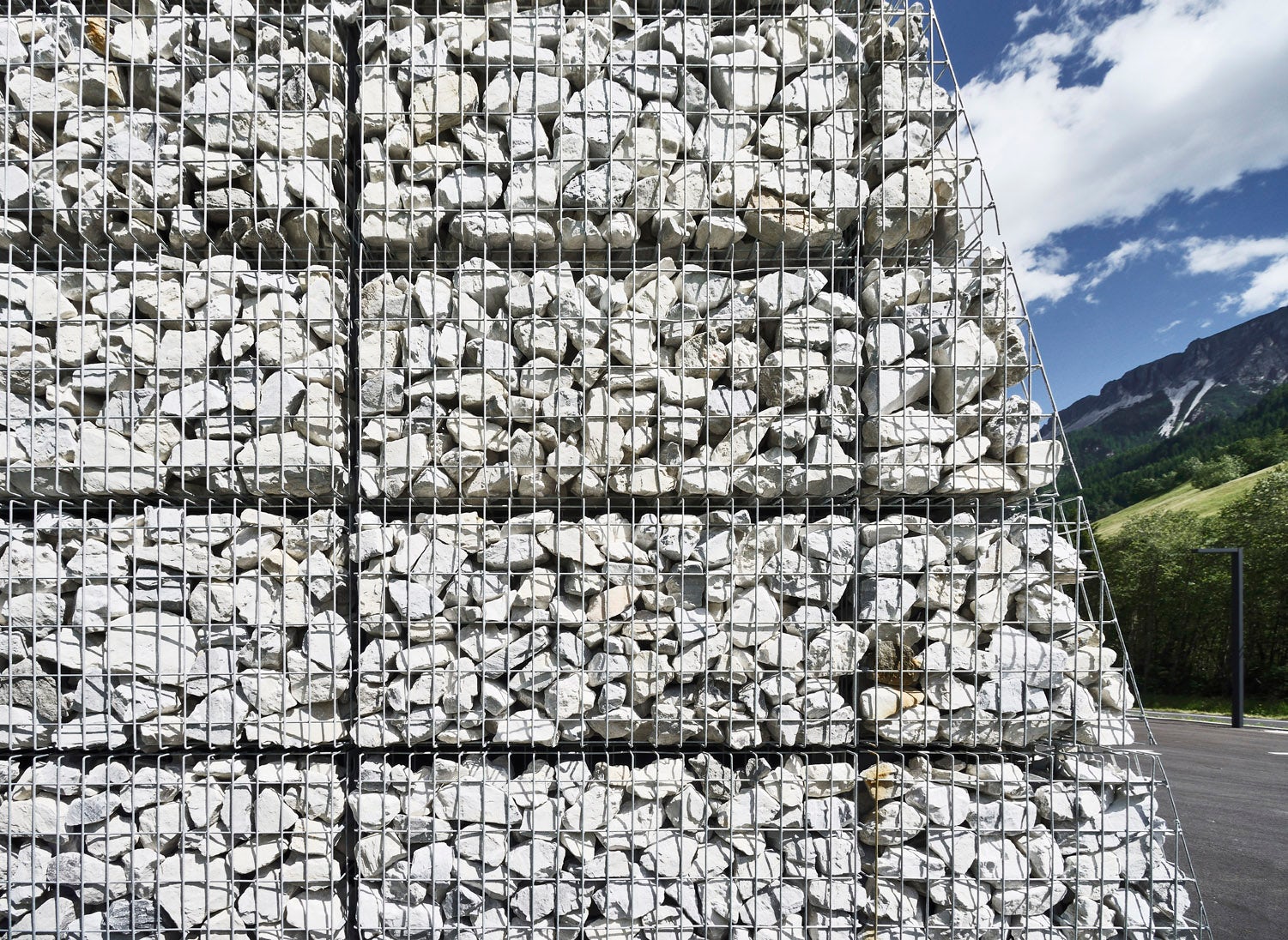
© Oskar Da Riz

© Oskar Da Riz
Fire Station Fleres by Roland Baldi architects, Trentino-Alto Adige, Italy
The design of this striking fire station addresses the natural phenomena of mud slides that happens on the mountain annually. The façade of the building consists of dolomitic rock collected from the construction site and put into the gabion walls that face the front.

© Imbue Design

© Imbue Design

© Imbue Design
Buddhist Retreat by Imbue Design, Grover, Utah, United States
Intertwining the acts of living and spiritual ritual, this Buddhist Retreat incorporates volcanic rock, found on the site, into the gabion wall under the meditation room. The rock acts to dissipate much of the heat received by the house in the summer.

© Barycz & Saramowicz Design Office

© Barycz & Saramowicz Design Office

© Barycz & Saramowicz Design Office
Forest House in Izabelin Near Warsaw by Barycz & Saramowicz Design Office, Warsaw, Poland
This luxurious residence in Warsaw asserts its presence in the landscape with soaring gabion walls, posing a technical challenge for the architect. But with planning and precision, the walls were laid out meticulously to form a fortress-like exterior wall, referencing the military origins of gabion walls.

© I/O architects

© I/O architects
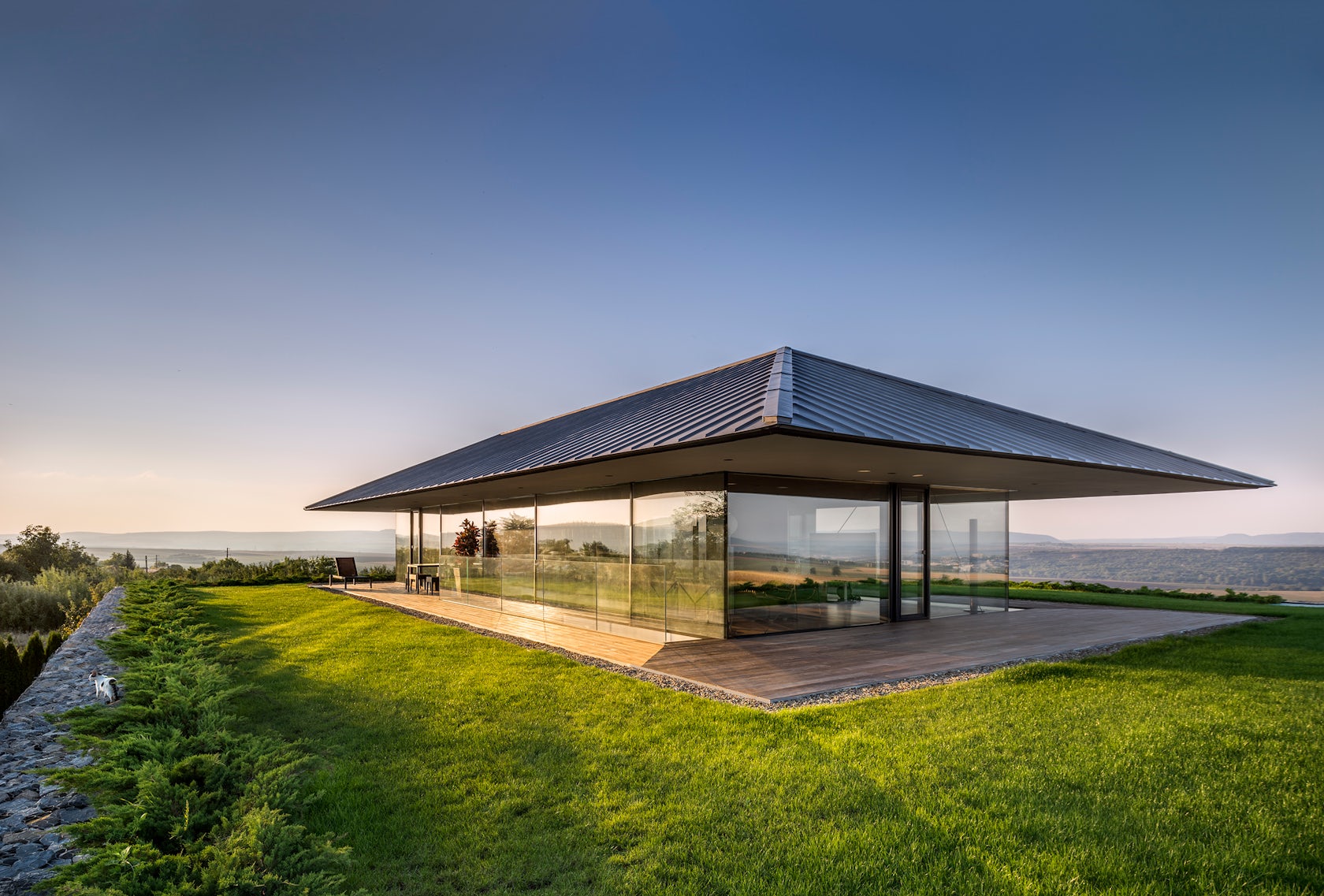
© I/O architects
Observation House by I/O architects, Bulgaria
A remarkable building by I/O architects, the Observation House extends the reach of the gabion wall in architecture by using it as both a landscape and architectural element. The wall simultaneously acts as the exterior wall for the downstairs, and as the ground for a small lawn on the second floor.

© A31 ARCHITECTURE CONSTRUCTION

© A31 ARCHITECTURE CONSTRUCTION

© A31 ARCHITECTURE CONSTRUCTION
Relux Ios Island by A31 ARCHITECTURE, Ios, Greece
The recent renovation of Relux Ios Island incorporates stone gabion elements throughout the resort complex. One of the major goals of the project was to blend the surrounding landscape with the hotel, and gabion walls allowed for a clean, modern approach to this.

© Buchanan Architecture

© Buchanan Architecture

© Buchanan Architecture
Casa Linder by Buchanan Architecture, Dallas, Texas, United States
Casa Linder emphasizes reclaimed materials and the old homesteads of the first Dallas residents. The house employs a gabion wall along the front elevation for added texture and privacy for the pool behind it.

© kwpCREATE Architects

© kwpCREATE Architects

© kwpCREATE Architects
University of Pretoria Plant Science Complex by kwpCREATE Architects, South Africa
This Plant Science Complex at the University of Pretoria whimsically employs an embedded gabion wall with planters on the exterior of the building. The architects skillfully brought the effect of natural landscape into the architectural elements of the building.

© a21 studio

© a21 studio
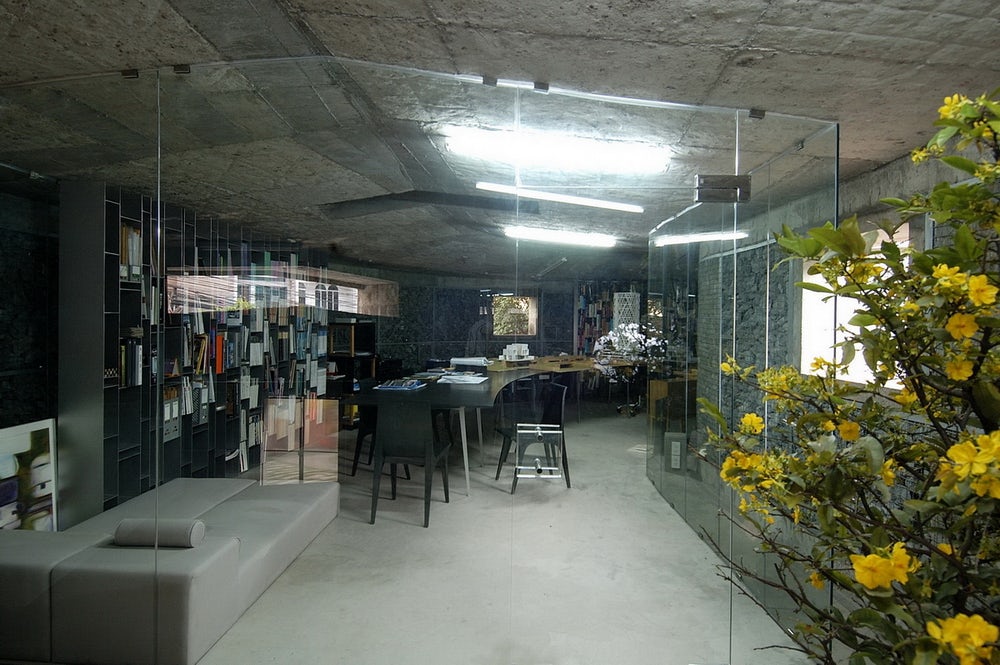
© a21 studio
Rock Office by a21 studio, Ho Chi Minh City, Vietnam
This winding office employs the gabion wall due to budget and lease-term constraints. The primary construction material needed to be inexpensive, locally sourced and easy to disassemble after 5 to 10 years of use.
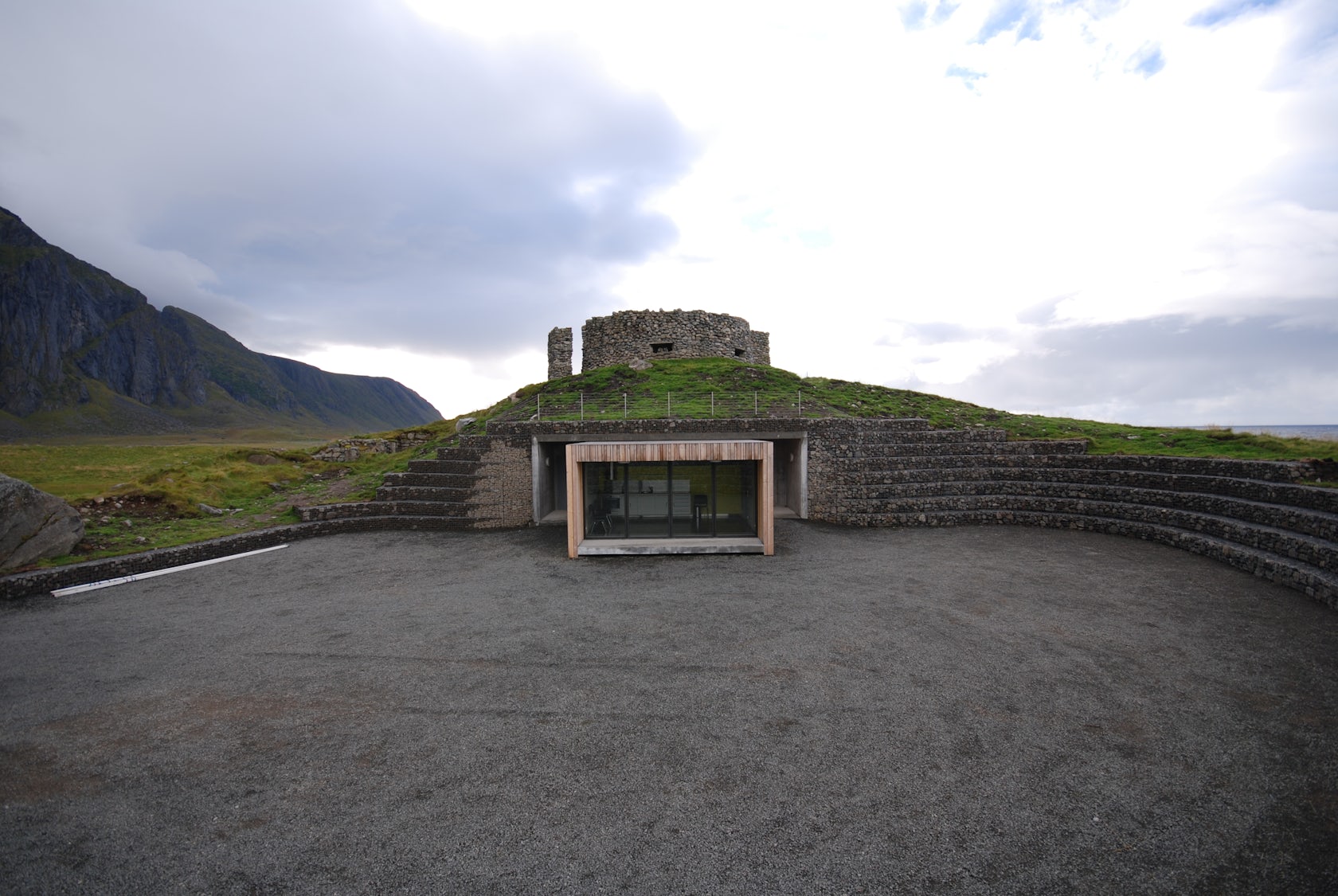
© Snøhetta

© Jarle Wæhler

© Snøhetta
Eggum Tourist Route by Snøhetta, Eggum, Norway
Gabion walls slope around this Norwegian tourist route stop, highlighting the landscape and creating an amphitheater for weary travelers. The gabion walls are not meant to stand out, but rather act to demarcate different programming throughout the stop.

© BCHO Architects Associates

© BCHO Architects Associates
Hanil Cement Information Center and Guesthouse by BCHO Architects Associates, Maepo-eup, Danyang-gun, South Korea
This project was designed to educate people about recycled concrete. Concrete is the primary building material of Korea and the building showcases how to reuse this material in casting formwork and recasting. A gabion wall makes up one part of the building, and excess concrete was recycled in the cages.

© Seeley Architects PL

© Seeley Architects PL
Dame of Melba by Seeley Architects PL, Anglesea, Australia
A holiday residence for a retired couple in Australia, this house overlooks the Anglesea coastline. The design centered around materials that weather well and require minimal maintenance. Large, granite-filled gabion walls retain the hillside and make up the boundary of the carport.

© Titus Bernhard Architekten

© Titus Bernhard Architekten
House 9×9 by Titus Bernhard Architekten, Stadtbergen, Germany
House 9×9 is located in a suburban community of Augsburg. It was designed as an inhabitable sculpture for a couple and a statement against banal local design statutes. A gabion façade was suspended from the insulated and sealed shell as a non-load-bearing structure.

© benjamin benschneider

© benjamin benschneider
Basecamp by Johnston Architects pllc, Ronald, Wash.
Basecamp was guided by the idea of pausing before ascending a mountain. Here, people can recharge before milestones in life and reconnect with nature between activities. Gabion walls serve to blur the boundary between indoor and outdoor space.

© F8 Architecture

Orphanage by F8 Architecture, Bamako, Mali
This orphanage in Mali is a shelter for 30 children of all ages. The program includes housing for children and staff, a small medical center, admin offices, kitchen, and dining hall. More utilitarian functions are located on the ground level while classrooms and terraces are located above. Gabion cladding is used on the most exposed façades of the building.

© Dualchas Architects
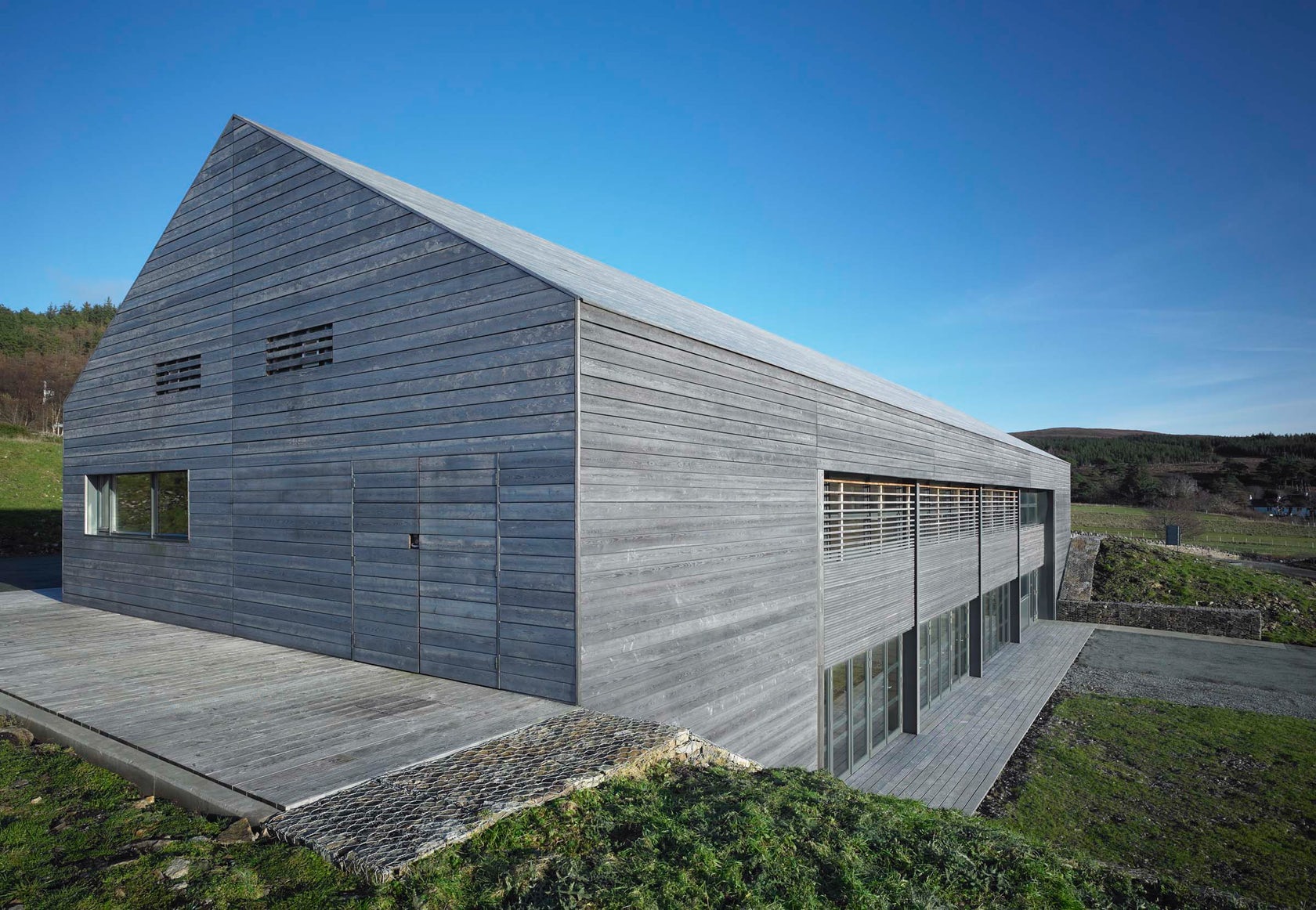
Raasay Hall by Dualchas Architects, Glasgow, United Kingdom
The design of the Raasay village hall replaces a former house that was used for concerts, talks, or gatherings. The building is fully accessible and includes many programs, including indoor football, a gymnasium, a full-sized badminton court, as well as concerts, discos, and the film club. A timber rain-screen roof combines with stone from the site that was incorporated into the gabion.

© Fotografia Maciej Lulko

© kropka studio
House in the Landscape by kropka studio, Zawiercie, Poland
Two volumes connected by openwork wooden links, this house was constructed in the buffer zone of the Eagles’ Nests natural landscape park. The powerful context includes agricultural fields, old stone churches, and castle ruins. The main part of the building is finished with gabion baskets filled with local limestone, thus helping to create a design that blends the house into the landscape.

© Bark Design Architects

© Bark Design Architects
Maleny House by Bark Design Architects, Sunshine Coast, Australia
Maleny House was created as a glass mountain house, one that celebrates the unique landscape and rim condition it is perched upon. Anchored and robust, the house was also designed to be transparent, light, and floating. A stone mason helped create a unique gabion stone wall as a landscape art element along the edge of the house.
Architects: Showcase your next project through Architizer and sign up for our inspirational newsletter.
Introduction and first 9 project descriptions by Alden Rose; 8 following project descriptions by Eric Baldwin.
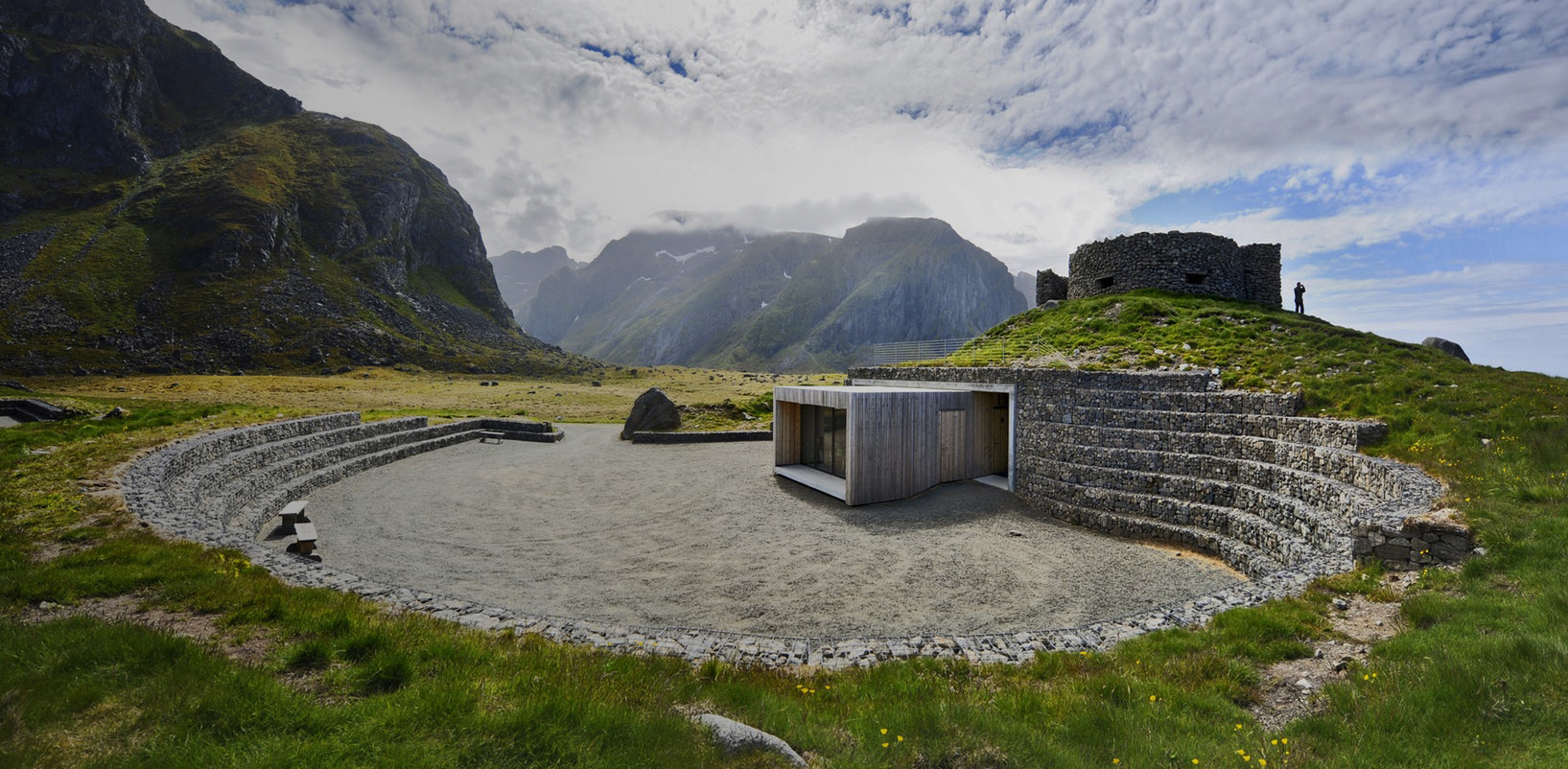
 Basecamp
Basecamp  Buddhist Retreat
Buddhist Retreat  Casa Linder
Casa Linder  Dame of Melba
Dame of Melba  Eggum Tourist Route
Eggum Tourist Route  Fire Station Fleres
Fire Station Fleres  FOREST HOUSE IN IZABELIN NEAR WARSAW
FOREST HOUSE IN IZABELIN NEAR WARSAW  Hanil Cement Information Center and Guesthouse
Hanil Cement Information Center and Guesthouse  House 9x9
House 9x9  House in the landscape
House in the landscape  Maleny House
Maleny House  Observation house
Observation house  Orphanage
Orphanage  Raasay Hall
Raasay Hall  Relux Ios Island
Relux Ios Island  Rock Office
Rock Office  University of Pretoria Plant Science Complex
University of Pretoria Plant Science Complex 
